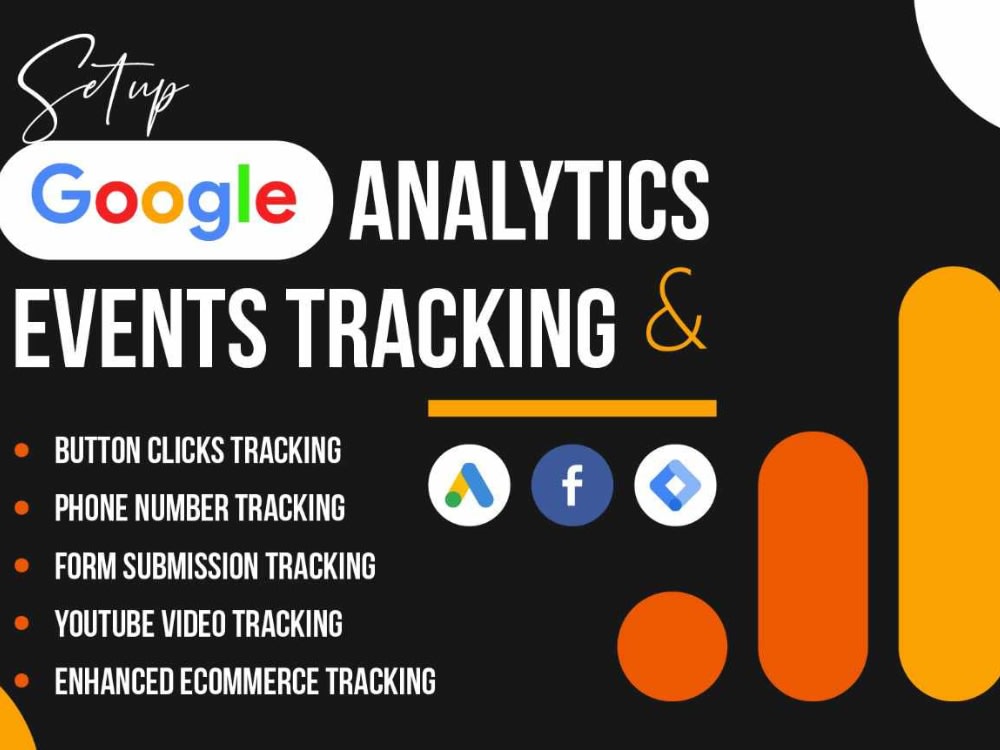The 15-Second Trick For Google Analytics Event Tracking
Wiki Article
Indicators on Google Analytics Event Tracking You Should Know
Table of ContentsFascination About Google Analytics Event TrackingGetting My Google Analytics Event Tracking To WorkThe Only Guide to Google Analytics Event Tracking9 Easy Facts About Google Analytics Event Tracking DescribedThe Buzz on Google Analytics Event TrackingThe Main Principles Of Google Analytics Event Tracking

If you're mosting likely to set up occasion tracking manually, after that you're going to have to add some additional code to the elements you intend to accumulate data from. The code you're mosting likely to deal with will look something such as this: There are four parts within that code fragment that you're going to need to specify yourself: event, Group, event, Activity, event, Label and occasion, Value.
As you can see, two of these are called for (category and action) while label and worth are optional. It all depends upon the sort of information you want communicated back to Google Analytics when a customer clicks on the defined aspect (Google Analytics Event Tracking). It will certainly be a lot less complicated to define these elements if you evaluate your website and choose which elements/actions you intend to track
Some Known Questions About Google Analytics Event Tracking.
Currently, you'll be asked to specify the and and you'll desire to choose from the drop-down menu that shows up when you click on. This will certainly raise the exact same event tracking elements we considered earlier, which you'll require to complete. When you've defined these, you can relocate to the second box and choose the trigger that will discharge your tag.On the following screen, you'll likewise have a field for naming your trigger and, if you click the box, you'll see a list of the different triggers you can select. In this situation, we intend to pick and afterwards pick the choice listed below. You'll set the trigger to only discharge when an aspect is clicked with an URL that has the.
Basic - Occasion tracking! Occasion monitoring provides you a picture of exactly how customers engage with your internet site and business. Read on as we explore whatever you require to know, including what it is, why you must track occasions, how to handle occasions information, and other appropriate Frequently asked questions you might have.
The Ultimate Guide To Google Analytics Event Tracking
You can switch over between your occasion categories, actions, and labels in the Leading Occasions report. This report is critical for excavating better right into study on a certain occasion group. The Occasion Pages record shows the pages where events are triggered. In this section, we can analyze the top pages that drive occasions.Events in Google Analytics have 4 main components. Google Analytics utilizes these codes to track user communications and group them right into event records (Google Analytics Event Tracking).
A checklist of the criteria you can track on your internet site is on the. After inspecting all necessary fields, you can click "X" to shut the home window and return to the Summary menu on the.
The Basic Principles Of Google Analytics Event Tracking

Picking "False" will avoid that session from being a bounce. If you have not done so, you might require to set up a variable in the Google Analytics Settings box. Click "New Variable ..." if you can't discover one to select. Hereafter, enter your GA monitoring ID helpful resources in the Monitoring ID area.
To do this, adhere to the following collection of actions: After setting up the areas, choose the "Triggering" section. When configuring your new trigger, click the "+" button, then the "pencil" switch, after that select your trigger type.
3 Easy Facts About Google Analytics Event Tracking Explained
When it comes to recognizing which sections and components are assisting customers with your conversion channel, you still won't recognize. Without occasion monitoring, GA reports will just count visits as single-page sessions, even if customers spend a great deal of time on one web page and engage you could try this out with it substantially (and a bounce).
However how does event tracking accomplish this?Single-page sessions recognized as bounces begin and end on the same page. Without event monitoring, GA will classify a user's see as a bounce if they don't browse to one more web page, no matter of just how they interact with it. For example, a video-rich web page can have a greater bounce price if occasions are not tracked.
8 Simple Techniques For Google Analytics Event Tracking
For GA to take occasion hits into account when measuring bounce prices, you should choose "Non-interaction occasion" as "False" throughout the GTM arrangement. Setting "occasion goals" with event activity is an outstanding way to keep track of customer tasks you value extremely, such as new lead entries or clicks on a contact us to action.Report this wiki page